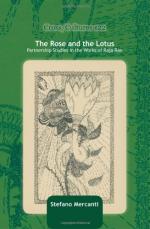|
This section contains 1,437 words (approx. 5 pages at 300 words per page) |

|
[In Kanthapura,] Raja Rao has abandoned his position as story teller, giving it over to his fictive female persona [Achakka]. I can think of few other instances in Third World fiction where a male novelist has done this. (p. 134)
With the exception of Afro-American fiction, I would have to say that in most Third World novels female characters play lesser roles than their male counterparts—no doubt in large part because Western (romantic) love is missing as a theme. If women are present in any of these books, they tend to be of incidental importance, functional objects in an otherwise masculine-oriented world….
[But in] Kanthapura, women are the vanguard for an entire revolutionary change. (p. 135)
Raja Rao's structural device of relinquishing his omniscient position to the [fictive narrator] within the story, coupled with that narrator's use of plural pronouns, is responsible for much of the effectiveness of the...
|
This section contains 1,437 words (approx. 5 pages at 300 words per page) |

|


